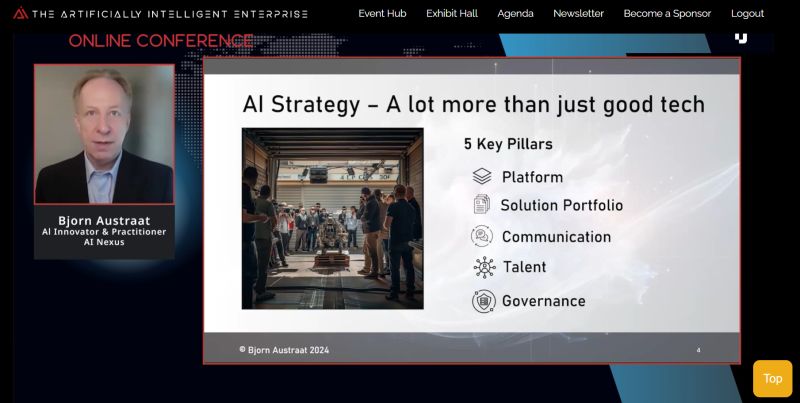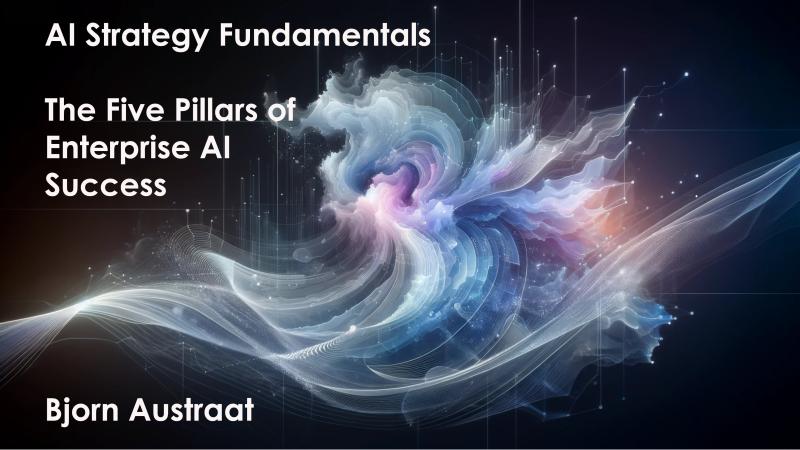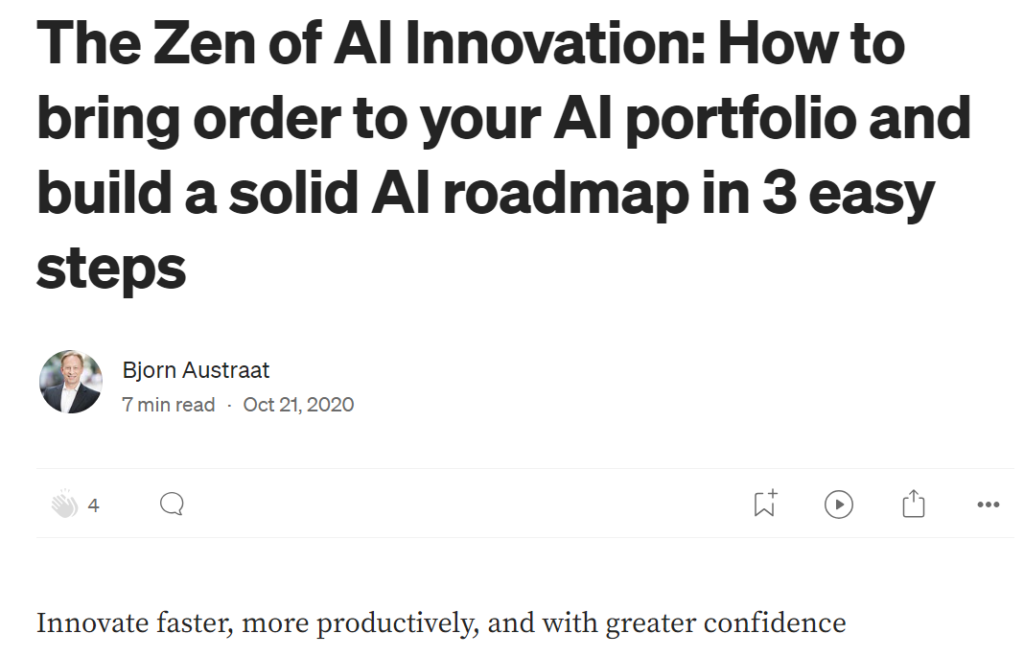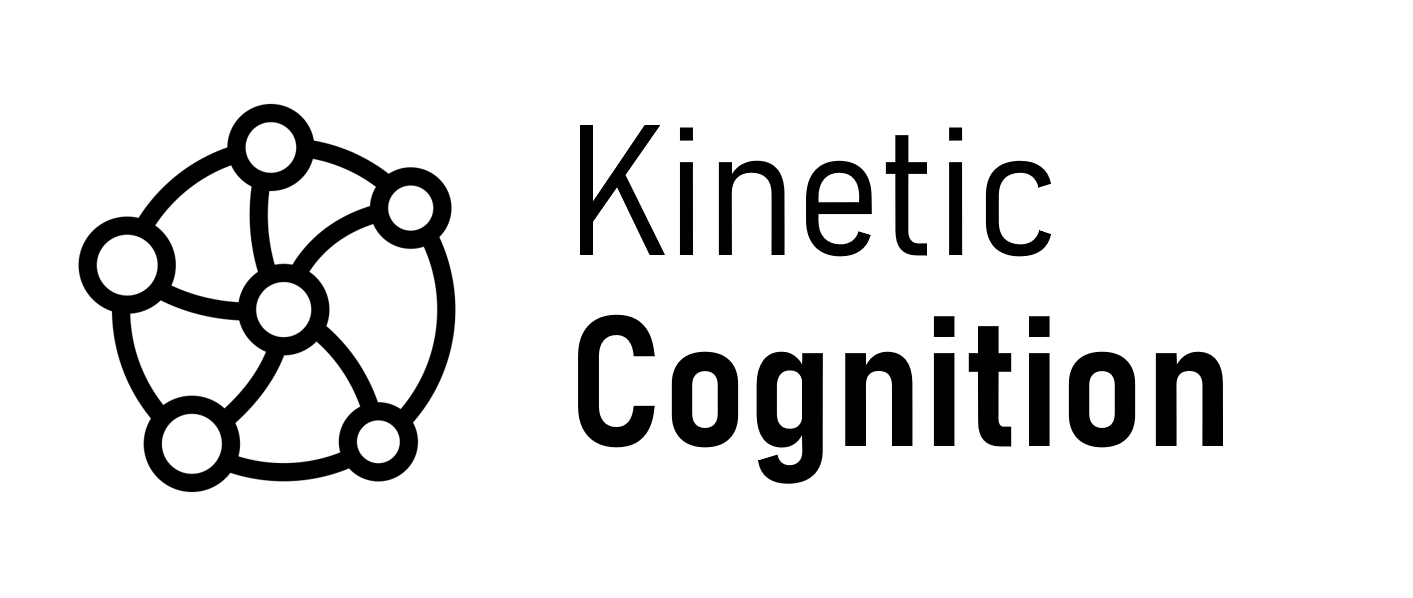Kinetic Cognition Resource Hub
You’ll find free resources authored by the Kinetic Cognition team as well as links to useful publications to help jump-start your AI journey and keep you current with the latest AI news.
Enterprise AI Impact – Best Practices for going from Aspiration to Impact
Enterprises are eager to adopt generative AI, but moving beyond flashy proofs of concept to real business impact requires governance, strategy, and coordination.
Some key takeaways from my 45-minute conversation with Ankur Patel
- The decision to build AI in-house or rely on vendors depends on whether the technology is core to the business or better outsourced.
- AI talent is another major challenge—companies must invest in upskilling, attract new talent, and ensure knowledge retention to avoid setbacks when employees leave.
- With AI evolving rapidly, businesses need to plan in short cycles, continuously adapt, and focus on practical enterprise AI applications that improve operations rather than getting caught up in hype.
Many organizations struggle with fragmentation as different teams pursue AI projects without a unified approach, leading to tech debt and inefficiencies.
Be sure to catch the full episode here:
AI-Driven Strategies for Customer Experience
A wide-ranging panel discussion on the impact of AI-driven strategies on customer experience.
Topics include Retrieval Augmented Generation, the importance of high-quality source data, personalization of transactions and content, the critical factor of human empathy, and much more. I joined fellow panelists Walt Carter and Chandler Wilson under the expert moderation of Bob Taylor.

AI Strategy Fundamentals – The Five Pillars of Enterprise AI Success
Five Pillars Mindmap
AI platform: Create a data marketplace, leverage synthetic data, and implement end-to-end ModelOps.
Solution portfolio: Build an AI portfolio aligned with strategic goals using unifying frameworks and design thinking principles.
Communication: Craft compelling narratives, tailor messaging, and engage stakeholders through innovative channels.
Talent: Attract and retain top AI talent, incentivize continuous learning, and foster collaboration.
Governance: Ensure safe, ethical, and compliant AI deployment through data governance, model explainability, and adversarial robustness.
Five Pillars – 30 minute Presentation
An interactive walkthrough of the Five Pillars from the 2024 The Artificially
Intelligent Enterprise Online Conference

Five Pillars – Premium Edition Online Course in cooperation with the Applied AI Institute

A full-featured online, self-paced learning version of the Five Pillars in collaboration with the Applied AI Institute.
Includes:
- 7 video lectures with detailed walkthroughs of each topic featuring memorable and practical examples from real-world implementations
- 26 pages of detailed, downloadable lecture notes and illustrations
- 37 high-resolution, detailed slides in downloadable PDF format
- 7 quiz sections to solidify and test your learning progress
- Certificate of Completion
Use AINEXUS20 at checkout for an instant 20% discount!

AI Innovation Management – The 4Ds and Innovation Portfolios
Filling your AI innovation funnel with high-quality ideas is easier said than done. What’s a science experiment and what’s potentially the ‘next big thing?’ To get a holistic picture early on in the innovation lifecycle, I recommend the 4D Framework for vetting candidate ideas. The 4 Ds are Data, Dollars, Deployability, and Differentiation.
Once you have identified a solid roster of candidates, you can then use the Innovation 2×2 of Customer Demand and Cability to Execute to sort opportunities into incremental, partner, fast win/fast fail, and disruptive innovation. Find out more in the detailed Medium article below:

Newsletters we like
TLDR AI
TLDR AI – from the TLDR family of newsletters. Daily digest of essential AI funding, product, and development news.
The Neuron
The Neuron – An irreverent take on AI industry news brought to you by @nonmayorpete & @noahedelman02


